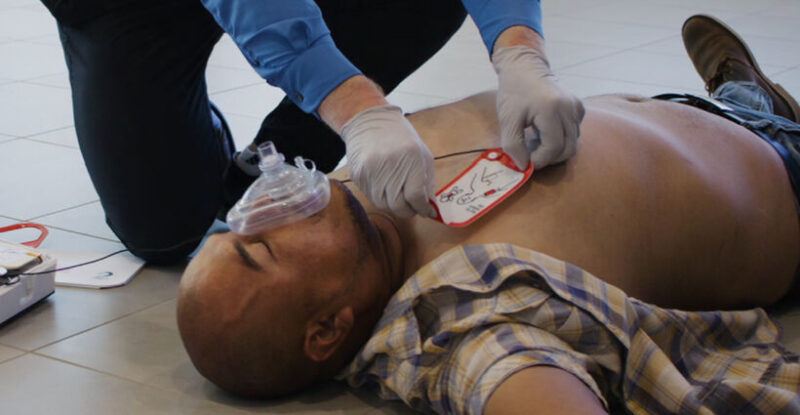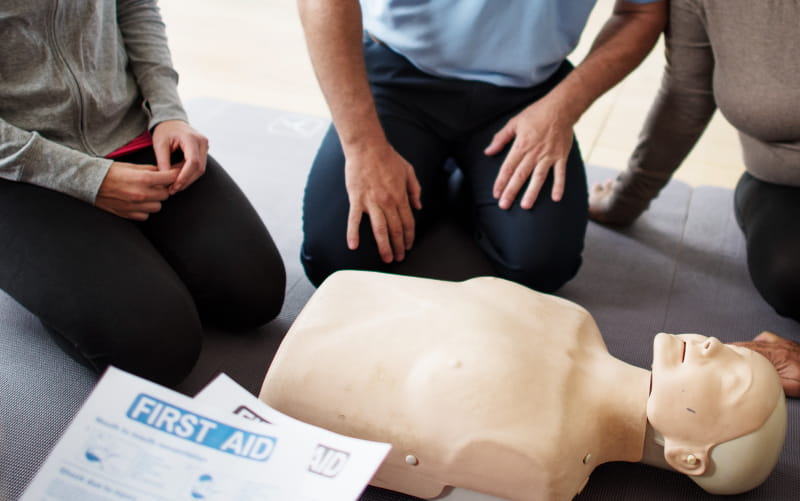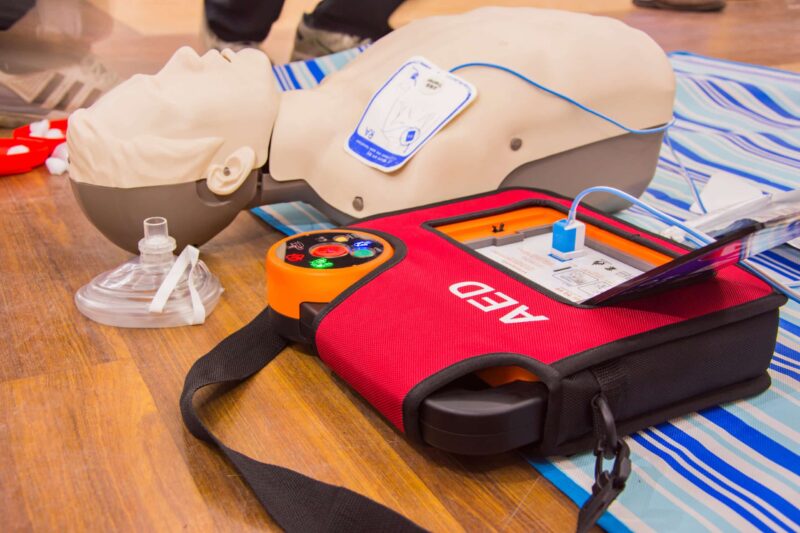Every day we find ourselves in different scenarios where the unexpected can occur. Yet, few situations are as immediately critical as a cardiac emergency. Each year, hundreds of thousands of people worldwide experience sudden cardiac arrest outside a hospital setting. Imagine being able to increase their chances of survival significantly – that’s the power you wield when you know Cardiopulmonary Resuscitation (CPR) and how to use an Automated External Defibrillator (AED). This blog post aims to empower you with knowledge, resources, and motivation to learn these life-saving techniques, enabling you to potentially make a world of difference when every second counts.
Understanding CPR

CPR, or Cardiopulmonary Resuscitation, is a life-saving technique designed to keep oxygen flowing to the brain and other vital organs when the heart stops beating. It involves a series of chest compressions and rescue breaths, essentially replicating the heart and lungs’ functions. For adults, it consists of 30 compressions to two breaths at a rate of 100-120 compressions per minute. While these might seem like just numbers, the underlying reality is far from trivial. CPR can triple the chance of survival if administered immediately after a cardiac arrest. The critical window for CPR is the first two to five minutes after a person’s heart stops. Every minute that goes by without CPR reduces the likelihood of survival by 7-10%.
The Role of AEDs
While CPR is crucial, it’s not designed to restart a heart that has stopped – that’s where the AED comes in. An AED, or Automated External Defibrillator, is a device that can analyze a person’s heart rhythm and, if necessary, deliver an electric shock to help the heart reestablish an effective rhythm. AEDs are designed for use by untrained or minimally trained bystanders, featuring voice prompts to guide the user through the process. Their prevalence is increasing in public spaces and workplaces, a testament to their potential as life-saving tools.
Common Cardiac Emergencies
Being able to differentiate between different types of cardiac emergencies can be essential in providing the correct response. A heart attack happens when a blocked artery prevents blood from reaching a part of the heart. In contrast, sudden cardiac arrest is when the heart malfunctions and stops beating unexpectedly. Respiratory arrest occurs when breathing stops but the heart may still be beating. Each situation requires a distinct immediate response – a heart attack may need aspirin and medical help, while cardiac and respiratory arrests call for CPR and, likely, an AED.
Benefits of Learning CPR and AED Techniques

Learning CPR and AED techniques bestows numerous benefits, and the most profound one is the potential to save a life. When a cardiac emergency strikes, individuals equipped with these skills can step forward with confidence and precision. Besides, the ability to act decisively in high-stakes moments can significantly boost your self-esteem and foster personal growth. Whether it’s for a loved one, a colleague, or a stranger in the street, the skillset to perform CPR or use an AED could be the lifeline that snatches life back from the brink of death. Moreover, an increased number of individuals with these skills within a community amplifies its resilience against health emergencies, strengthening the overall community fabric. To learn more about the subject please visit https://cprcertificationnow.com/products/cpr-first-aid-certification.
Overcoming Fear and Hesitation
It’s natural and human to feel anxious about the prospect of performing CPR or using an AED. Facing a life-or-death situation can be daunting, and it’s okay to acknowledge that. However, it’s essential to remember that in cardiac emergencies, doing something – however imperfect – is invariably better than doing nothing. Fear and hesitation often stem from a lack of knowledge, which can be effectively addressed by education and practice. Countless individuals have overcome their initial apprehensions and gone on to make real differences in emergencies. Their stories of courage stand testament to the fact that with the right mindset and training, anyone can be a life-saver.
CPR and AED Training Options
Numerous avenues are available for you to learn CPR and AED techniques, each catering to different learning preferences and schedules. You can opt for local classes if you prefer a hands-on, community-based approach. Online courses offer flexibility, allowing you to learn at your own pace, while community workshops offer a combination of instruction and practical application. It’s crucial to opt for accredited programs to ensure you receive high-quality, reliable training. Reputable organizations such as the American Heart Association, Red Cross, and the National CPR Foundation offer such programs, paving your path to become an equipped, confident first responder.
Practice and Refreshing Skills
Like any acquired skill, proficiency in CPR and AED use necessitates regular practice and skill refreshing. Once the initial training is completed, consistent practice helps embed these skills in your memory, ready for instant recall when needed. Refreshing courses and mock emergency drills play a pivotal role in maintaining your readiness, providing essential touchpoints for skill refinement. Practicing these techniques with family and friends not only creates a supportive network of skilled individuals but also promotes a shared sense of responsibility towards community health and well-being.
Involving Schools and Workplaces
The implementation of CPR and AED training in schools and workplaces can have ripple effects, extending far beyond these environments. This initiative creates a ‘heart-safe’ environment, where every student or employee is equipped with the knowledge to respond effectively to cardiac emergencies. This not only has the potential to save lives within these institutions but also fosters a culture of health and safety awareness. Encouraging such a mindset from a young age in schools and maintaining it in workplaces can significantly increase survival rates in emergencies.
Legislation and Advocacy for CPR and AED Training

Laws regulating CPR and AED training vary widely across regions. Advocacy for more robust and widespread training mandates can play a significant role in creating a safer society. Advocacy isn’t reserved for lawmakers alone; you too can be part of this change. By voicing your support for comprehensive CPR and AED training, you contribute to a broader cultural shift towards embracing these life-saving skills, leading to policies that prioritize community health and resilience.
Spreading Awareness and Encouraging Others
The power of social influence cannot be underestimated when it comes to promoting CPR and AED training within your community. Well-executed social media campaigns can reach wide audiences, capturing attention and spurring people into action. Local community events provide personal interactions, allowing for in-depth conversations and hands-on demonstrations. Sharing personal experiences, success stories, and testimonials can inspire others by illustrating the real impact of these skills. Together, these approaches can create a wave of awareness and motivation that propels more individuals to embark on this life-saving journey.
Conclusion
Understanding CPR and AED techniques, and the role they play in saving lives, is a critical facet of individual and community safety. The knowledge you acquire, the fears you conquer, and the skills you master might one day enable you to save a life. Everyone can be a part of this life-saving endeavor. Take that first step today, learn CPR and AED techniques, and become part of a compassionate, prepared community.

